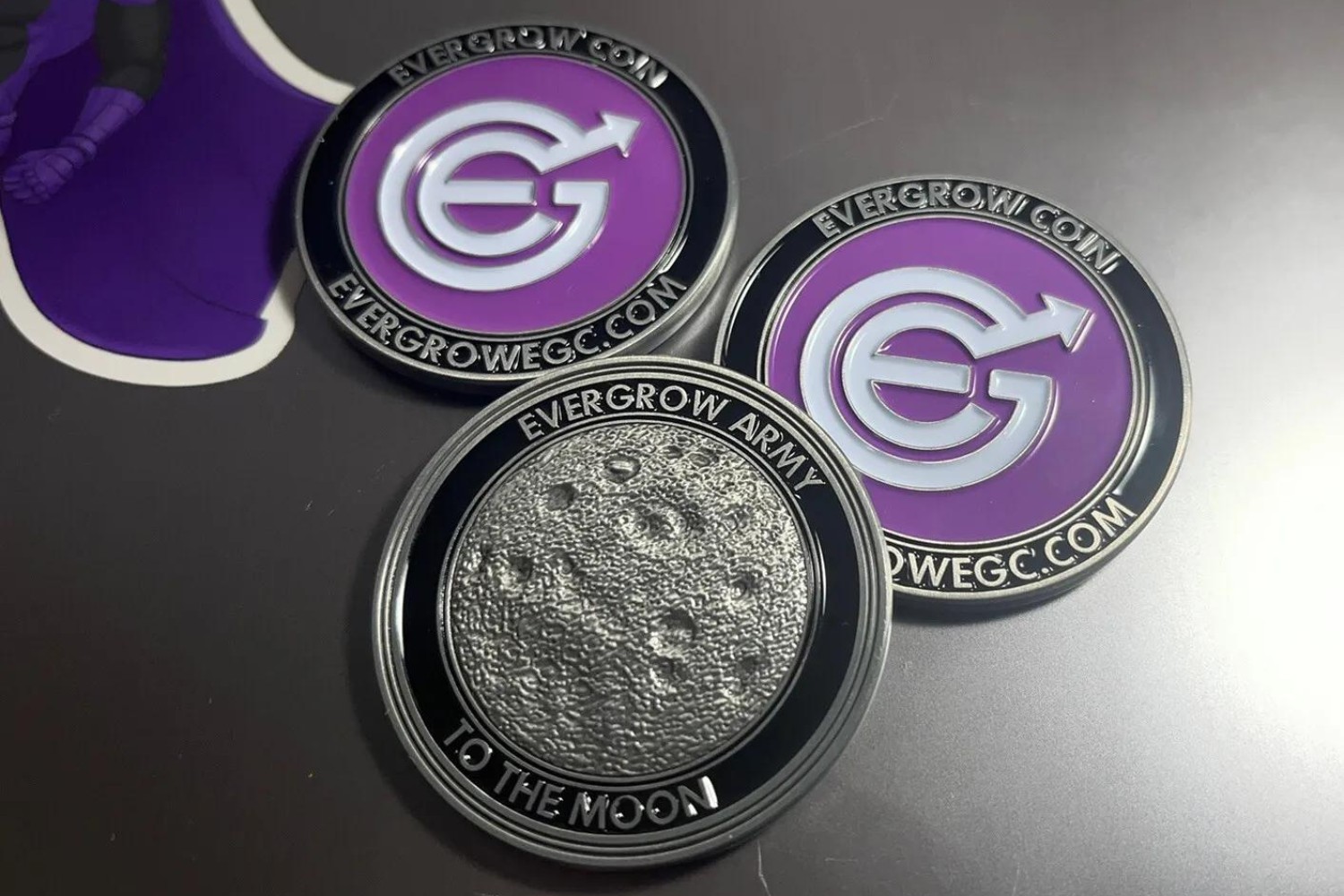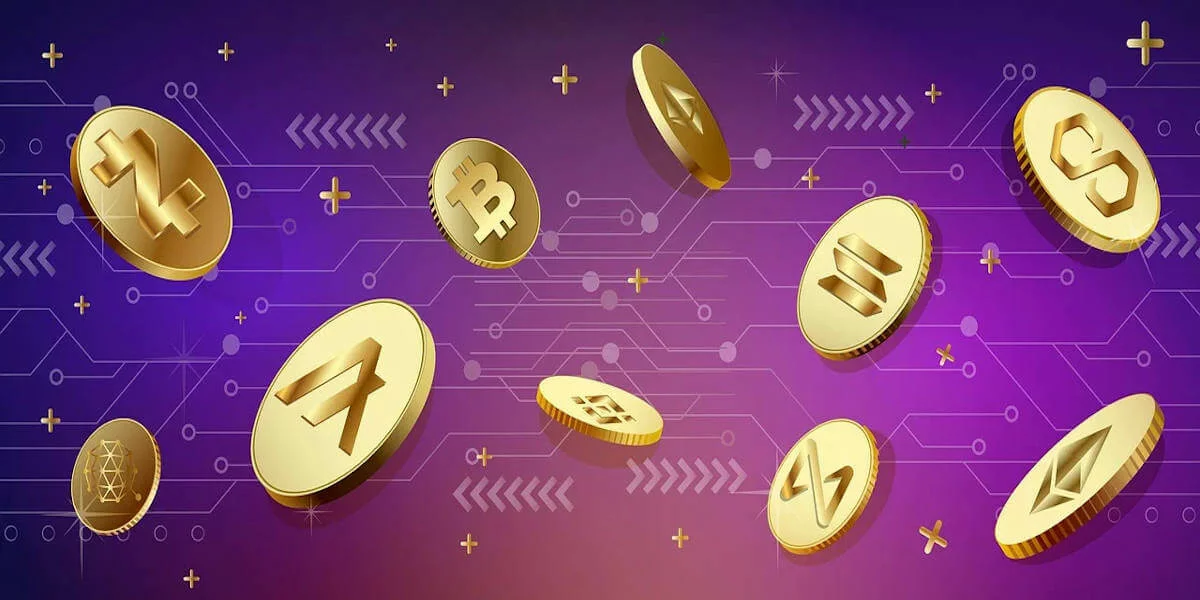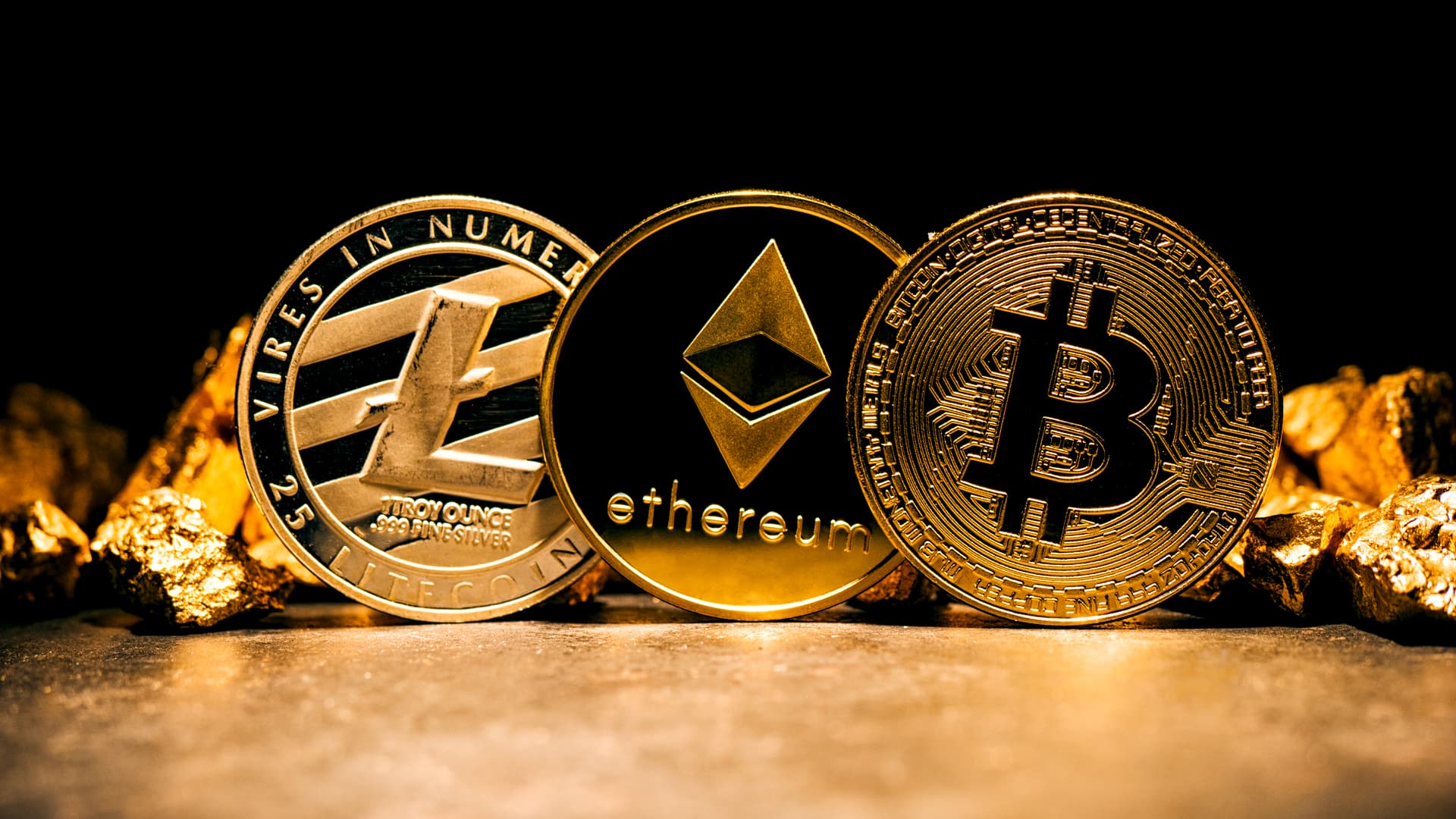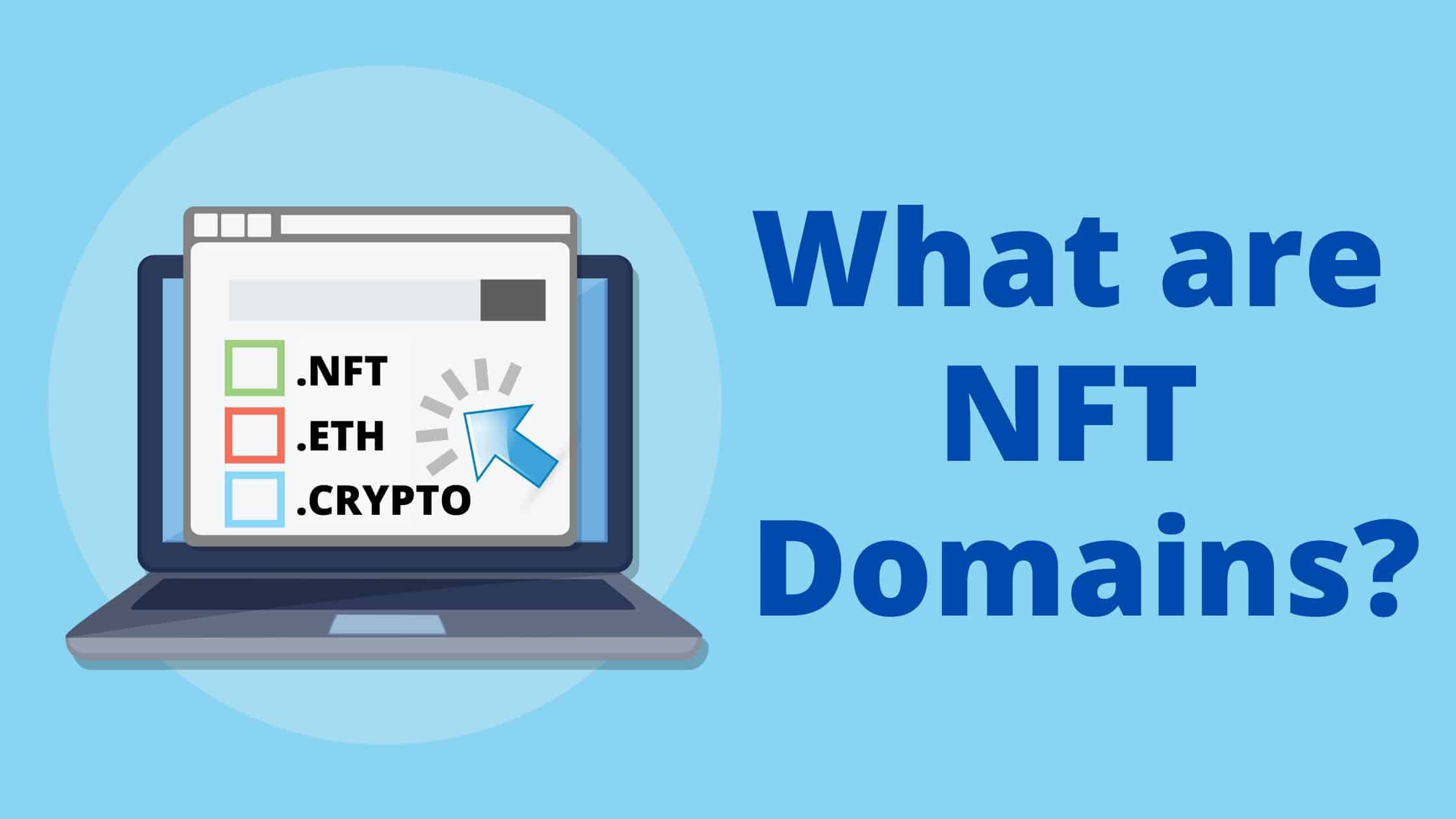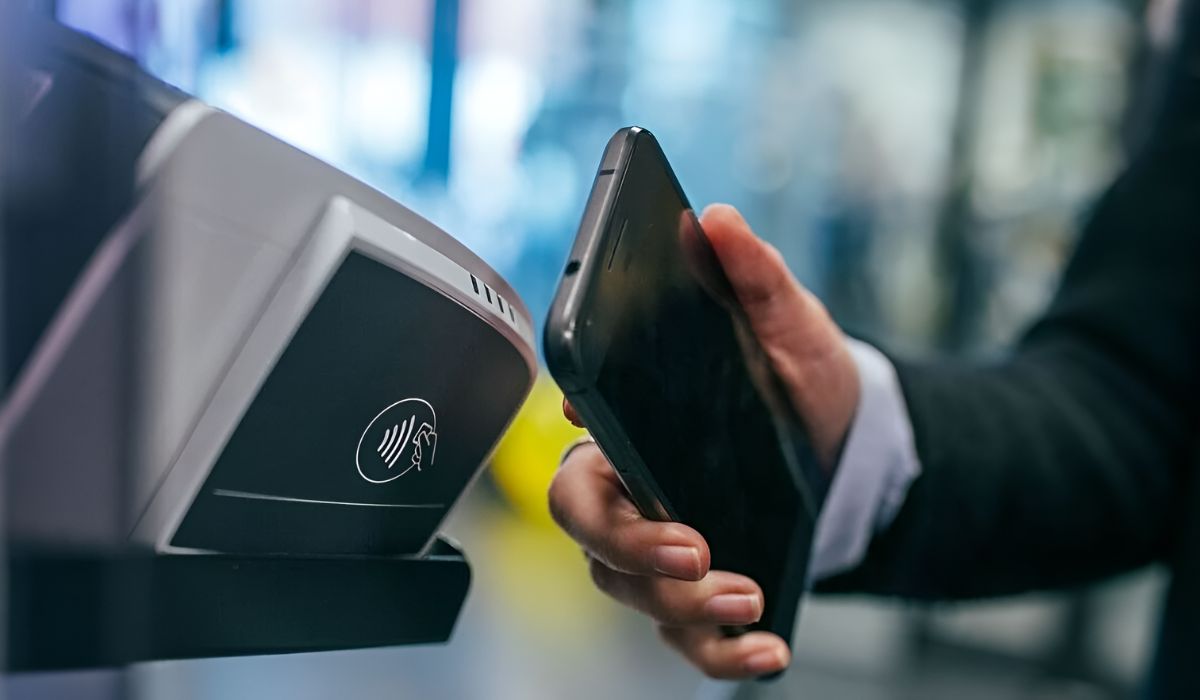What Is Tokenization?
Tokenization refers to the process of converting real-world assets, such as property, art, or investment instruments, into digital tokens that can be securely stored and transacted on a blockchain or a distributed ledger. These tokens represent ownership in the underlying asset and can be easily transferred and traded, providing a more efficient and accessible method for investing in alternative assets.
Tokenization offers a transformative solution by breaking down traditional barriers associated with investing in alternative assets. It allows for the fractional ownership of high-value assets, enabling investors to own a percentage of an asset rather than the entire thing. This fractional ownership opens up opportunities for a broader range of investors to participate in alternative investments that were previously available only to wealthy individuals or institutions.
By leveraging blockchain technology, tokenization ensures the immutability, traceability, and security of transactions. Each token is uniquely identifiable, making it easy to prove ownership and provide transparency throughout the investment process. The use of smart contracts further enhances the efficiency of tokenized investments, automating processes such as dividend distribution, voting rights, and asset management.
Moreover, tokenization extends beyond physical assets, as it can also represent rights to intellectual property, revenue streams, and even future earnings of a company. The versatility of tokenization opens up a vast array of investment opportunities across various industries, including real estate, art, venture capital, and even unique asset classes like collectibles or rare wines.
It is essential to note that tokenization is not limited to a specific blockchain protocol. Different projects and platforms have emerged, each with its own approach and technology stack. Ethereum-based tokens, such as ERC-20, are widely used for tokenizing assets, but other protocols like Polkadot, Tezos, and Stellar also offer tokenization capabilities.
In summary, tokenization revolutionizes the way alternative assets are created, owned, and traded. By transforming real-world assets into digital tokens on a blockchain, it unlocks new possibilities for investors, increases liquidity, reduces costs, and provides global accessibility to alternative investments. Through this innovative process, tokenization is reshaping the landscape of the financial industry and opening doors for a more inclusive and efficient investment ecosystem.
Tokenization in the Context of Alternative Investments
Alternative investments, such as real estate, private equity, hedge funds, and collectibles, have traditionally been accessible only to a limited number of high-net-worth individuals and institutional investors. However, tokenization is transforming the landscape of alternative investments, offering new opportunities for a broader range of investors.
Tokenization brings several advantages to the realm of alternative investments. One crucial benefit is the fractional ownership it enables. With tokenization, an asset can be divided into smaller units, allowing investors to buy and own fractions of high-value assets. For example, an individual can invest in a tokenized real estate property and own a percentage of it, bypassing the need to purchase the entire property outright. This opens up investment possibilities for individuals who do not have the resources to invest in full properties.
Another significant advantage of tokenization is increased liquidity. Traditional alternative investments often suffer from illiquidity, with investors having limited options to sell or exit their investments before the investment term ends. However, tokenization allows for more efficient and accessible trading of tokenized assets on secondary markets. Investors can buy and sell tokens representing their ownership, providing greater flexibility and liquidity.
Furthermore, tokenization reduces barriers to entry for investors by lowering investment minimums. Traditional alternative investments often require substantial upfront capital, limiting access to only a select group of wealthy individuals. In contrast, tokenization allows for smaller investment amounts, enabling a wider range of investors to participate in alternative investments. This inclusivity promotes democratization by providing opportunities for individuals with different financial capacities to diversify their investment portfolios.
Tokenization also offers benefits in terms of cost reduction and efficiency. By eliminating intermediaries and streamlining the investment process, tokenization reduces administrative costs and transactional complexities associated with traditional alternative investments. The use of blockchain technology and smart contracts enables automated processes, such as dividend distribution and compliance, resulting in faster and more cost-effective investment management.
Moreover, tokenization enhances transparency and security in alternative investments. Each token represents a unique digital asset, clearly identifying the ownership rights and providing a permanent record on the blockchain. This transparency fosters trust between investors and issuers, mitigating potential risks of fraud or disputes. Furthermore, blockchain technology ensures the integrity and security of transactions, strengthening the overall ecosystem of alternative investments.
In summary, tokenization is revolutionizing the field of alternative investments by offering fractional ownership, increased liquidity, reduced costs, and improved accessibility. This transformative process opens up new opportunities for investors to diversify their portfolios and participate in asset classes that were previously reserved for a privileged few. As tokenization continues to evolve, it holds vast potential to reshape the alternative investment landscape and create a more inclusive and efficient investment ecosystem.
Benefits of Tokenization for Alternative Investments
Tokenization brings numerous advantages to the world of alternative investments, revolutionizing the way people invest in assets such as real estate, private equity, and collectibles. Here are some key benefits of tokenization:
Secure Ownership and Transfer of Assets: With tokenization, assets are transformed into digital tokens that are securely stored and transacted on a blockchain. Each token represents ownership rights and is uniquely identifiable, ensuring transparent and tamper-proof records of ownership. This enhances the security of investments and reduces the risk of fraudulent activities.
Fractional Ownership and Increased Liquidity: Tokenization allows for fractional ownership of high-value assets, enabling investors to purchase and own a fraction of an asset rather than the entire thing. This facilitates the participation of a broader range of investors, including those with limited financial resources. Moreover, tokenization improves liquidity by allowing for the seamless buying and selling of tokenized assets on secondary markets.
Cost Reduction and Efficiency: Traditional alternative investments often involve complex and costly administrative processes. Tokenization simplifies these processes by leveraging blockchain technology and smart contracts. This automation reduces administrative costs, eliminates intermediaries, and streamlines transactional complexities. As a result, investors benefit from lower fees and faster investment management processes.
Global Accessibility and Increased Investor Base: Tokenization removes geographical barriers, providing global accessibility to alternative investments. Through tokenization, investors anywhere in the world can participate in investment opportunities that were previously restricted to specific jurisdictions. This expands the potential investor base and fosters a more diverse and inclusive investment ecosystem.
Enhanced Transparency and Trust: The use of blockchain technology ensures transparency and trust in tokenized alternative investments. Each transaction is recorded on the blockchain, creating an immutable and auditable record of ownership. This transparency reduces the risk of fraudulent activities and enhances investor confidence in the investment process.
Reduced Investment Minimums: Traditional alternative investments often require high minimum investment amounts, limiting access to a select group of wealthy individuals. Tokenization lowers these investment minimums, enabling individuals with smaller budgets to participate in alternative investments. This democratization of access promotes financial inclusion and allows for a more diverse investor base.
Overall, tokenization brings a multitude of benefits to alternative investments, including secure ownership, fractional ownership opportunities, increased liquidity, cost reduction, global accessibility, transparency, and reduced investment minimums. As the adoption of tokenization continues to grow, it has the potential to reshape the alternative investment landscape and unlock new possibilities for investors.
Secure Ownership and Transfer of Assets
One of the key benefits of tokenization in alternative investments is the secure ownership and transfer of assets. Traditional ownership of assets can be cumbersome and prone to fraud or disputes. However, tokenization leverages blockchain technology to provide a secure and transparent system for the ownership and transfer of assets.
When an asset is tokenized, it is converted into digital tokens that represent ownership rights. These tokens are stored on a blockchain, which serves as a decentralized and distributed ledger. Each token contains unique identifiers, making it easy to prove ownership and track the history of transactions associated with the asset.
This secure system of ownership offers several advantages. Firstly, it eliminates the need for physical certificates or paperwork, reducing the risk of loss or damage to important ownership documents. Instead, the ownership of the asset is recorded digitally on the blockchain, ensuring that the information is easily accessible and cannot be altered without a consensus from the network.
In addition, tokenization provides transparency and trust in the transfer of ownership. When a tokenized asset is sold or transferred, the transaction is recorded on the blockchain, creating an immutable and auditable record. This enhances transparency and confidence in the ownership transfer process, reducing the risk of fraud or disputes.
Furthermore, the use of smart contracts in tokenized assets adds an additional layer of security. Smart contracts are self-executing contracts with the terms of the agreement written into code. They automatically facilitate and enforce the transfer of ownership based on pre-defined conditions. This eliminates the need for intermediaries and reduces the risk of human errors or manipulation in the ownership transfer process.
Tokenization also improves the speed and efficiency of asset transfers. Traditional ownership transfers can be time-consuming and involve multiple intermediaries. Tokenized assets can be transferred instantly and seamlessly on the blockchain, eliminating the need for lengthy paperwork and manual processes.
Overall, tokenization provides a secure and transparent system for the ownership and transfer of alternative assets. By leveraging blockchain technology and smart contracts, it removes the reliance on physical documents, enhances transparency, eliminates intermediaries, and ensures the integrity of asset ownership. This secure system not only protects investors but also reduces costs, improves efficiency, and fosters trust in the alternative investment ecosystem.
Fractional Ownership and Increased Liquidity
Tokenization brings a significant advantage to alternative investments through the concept of fractional ownership, which allows investors to own a fraction of an asset rather than the entire thing. This fractional ownership model has the potential to revolutionize the investment landscape by increasing accessibility and liquidity.
Traditionally, alternative investments such as real estate, venture capital, and private equity required substantial capital to acquire a whole asset. This limited these investment opportunities to a small group of high-net-worth individuals or institutional investors. However, tokenization enables the division of assets into smaller, more affordable units represented by tokens.
By tokenizing assets, investors can now purchase fractional shares of high-value assets. For example, instead of purchasing an entire property, an investor can buy a fraction of it represented by tokens. This provides an opportunity for a wider range of investors, including those with limited financial resources, to participate in alternative investments that were previously out of reach.
Fractional ownership not only increases accessibility but also enhances liquidity in the alternative investment market. Historically, alternative investments have been known for their low liquidity, with limited opportunities to sell or exit investments before the investment term ends. However, tokenization allows for more efficient and accessible trading of tokenized assets on secondary markets.
Investors who hold tokens representing fractional ownership in an asset can sell their tokens to other investors on platforms or exchanges. This creates a liquid market where buyers and sellers can efficiently transact, increasing the opportunities for investors to exit or trade their assets. As a result, tokenized alternative investments offer greater flexibility and improved liquidity compared to traditional alternative investments.
Increased liquidity brings benefits to both investors and issuers. For investors, it provides a faster and more feasible exit strategy. They no longer need to wait for the investment term to end or rely on finding a suitable buyer for the entire asset. Instead, they have the option to sell their fractional ownership in the secondary market through token transfers.
For issuers, increased liquidity can attract more investors to participate in their tokenized offerings. It creates a more appealing investment opportunity when investors know they have the option to easily sell their holdings if needed. This broader investor base can lead to increased capital flow and better access to funding for various alternative investment projects.
In summary, fractional ownership made possible by tokenization enhances accessibility and increases liquidity in the alternative investment space. It allows a wider range of investors to participate by acquiring fractional shares of high-value assets. Additionally, the ability to trade tokenized assets on secondary markets provides improved liquidity and flexibility for investors. The concept of fractional ownership combined with tokenization opens up new opportunities and transforms the way alternative investments are accessed and traded.
Cost Reduction and Efficiency
Tokenization offers significant cost reduction and efficiency benefits in the context of alternative investments. Traditional investment processes often involve numerous intermediaries, complex paperwork, and manual processes, leading to inefficiencies and higher costs. By leveraging blockchain technology and smart contracts, tokenization streamlines these processes, resulting in cost savings and improved efficiency.
One of the main cost reduction benefits of tokenization is the elimination of intermediaries. Traditional investments often require the involvement of intermediaries such as brokers, custodians, and legal entities, which can add significant costs to the investment transaction. Tokenization removes the need for many of these intermediaries by enabling direct peer-to-peer transactions on the blockchain. This eliminates hefty fees and reduces the overall cost of investing.
In addition to removing intermediaries, tokenization reduces administrative costs associated with alternative investments. The issuance, transfer, and management of tokenized assets are automated through smart contracts. Smart contracts are self-executing contracts coded with predefined conditions, ensuring that all contractual obligations are met automatically. This automation reduces the need for manual intervention, paperwork, and administrative tasks, resulting in cost savings and operational efficiency.
Furthermore, tokenization improves the speed of investment processes. Traditional investments can involve lengthy settlement periods, verification procedures, and manual reconciliation, which can lead to delays and increased costs. Tokenized assets settle on the blockchain almost instantly, eliminating the need for manual processes and reducing settlement times. This increased speed and efficiency provide investors with quicker access to their investments and enable faster capital deployment.
Another cost-saving aspect of tokenization is the reduction of compliance costs. Compliance with regulatory requirements is a vital aspect of alternative investments, but it can be complex and costly to navigate. Tokenization automates compliance processes through smart contracts, ensuring that transactions occur in accordance with regulatory requirements. This reduces the need for manual oversight and costly compliance procedures, making it more accessible and cost-effective for both issuers and investors.
Moreover, tokenization enhances auditability and transparency, resulting in potential cost savings. On the blockchain, every transaction is recorded immutably, creating a transparent and auditable trail of ownership and transactions. This transparency reduces the need for extensive audits or manual recordkeeping, streamlining the financial reporting and auditing processes associated with alternative investments.
Overall, tokenization offers significant cost reduction and efficiency benefits for alternative investments. By eliminating intermediaries, automating administrative processes, reducing settlement times, automating compliance, and enhancing auditability, tokenization streamlines the investment process, improves operational efficiency, and lowers the overall cost of investing. As a result, tokenization provides investors with a more cost-effective alternative investment option, opening up new opportunities and increasing the potential returns on investments.
Global Accessibility and Increased Investor Base
Tokenization in alternative investments brings significant benefits in terms of global accessibility and the expansion of the investor base. Traditionally, alternative investments were often limited to specific jurisdictions or restricted to a small group of high-net-worth individuals and institutional investors. However, tokenization removes geographical barriers and enables a wider range of investors to participate in alternative investment opportunities.
With tokenization, investors from anywhere in the world can access and invest in tokenized assets. As digital tokens can be transacted on blockchain networks, geographical boundaries are no longer a hindrance. This global accessibility creates new opportunities for investors who were previously excluded from alternative investments due to their geographic location or limited access to investment opportunities.
One of the advantages of global accessibility is the ability for investors to diversify their portfolios across geographies and asset classes. Tokenization allows investors to access a broader range of assets from different markets and regions, increasing their portfolio diversification. For example, an investor from one country can easily invest in real estate assets located in another country through tokenized offerings, expanding their investment options and reducing their reliance on local markets.
Furthermore, tokenization increases the potential for cross-border capital flow in the alternative investment space. By breaking down barriers and enabling investments from different countries, tokenized assets attract a more diverse investor base. This inflow of capital can spur economic growth, promote innovation, and create new investment opportunities in various markets.
Tokenization also has the potential to unlock previously untapped investment opportunities in emerging markets. Many emerging markets lack the infrastructure and accessibility to traditional investment products. However, tokenization brings a digital and decentralized solution that allows investors from around the world to participate in emerging market investments. This can bring additional capital and liquidity to these markets, benefiting both local entrepreneurs and international investors.
Moreover, the global accessibility provided by tokenization fosters financial inclusion and democratizes access to alternative investments. Historically, alternative investments were only available to a privileged few, leaving many individuals without access to these asset classes. Tokenization opens up opportunities for a wider range of investors, including retail investors and those with limited financial resources, to participate in alternative investments.
Accessible investment options empower individuals to take control of their financial future and achieve greater diversification in their portfolios. It promotes financial literacy and enables investors to explore new asset classes and investment strategies that were previously inaccessible.
In summary, tokenization promotes global accessibility and expands the investor base in alternative investments. By removing geographical barriers and allowing investors from any location to access and invest in tokenized assets, it broadens the range of investment opportunities and encourages cross-border capital flow. This increased accessibility contributes to financial inclusion, diversification, and the democratization of alternative investments, ultimately fostering a more inclusive and vibrant investment ecosystem.
Challenges and Risks Associated with Tokenization
While tokenization brings numerous benefits to alternative investments, it also presents various challenges and risks that need to be considered. Understanding these potential issues is crucial for investors and industry participants to make informed decisions and mitigate risks.
Regulatory Framework and Compliance Considerations: Tokenized assets operate within existing regulatory frameworks and sometimes require new guidelines specific to blockchain-based investments. Regulatory uncertainty in certain jurisdictions can pose challenges for issuers and investors in terms of compliance, licensing, and legal obligations. Compliance with anti-money laundering (AML) and know-your-customer (KYC) regulations also becomes crucial to maintain transparency and prevent illicit activities.
Technology Infrastructure and Security Concerns: The security of the underlying blockchain infrastructure is paramount. While blockchain is known for its robustness, vulnerabilities in smart contracts, wallets, and exchanges have been exploited in the past, leading to significant losses. Therefore, it is crucial to employ robust security measures and conduct thorough audits to ensure the integrity and safety of tokenized assets. Additionally, technological scalability and network congestion may impact the performance and reliability of tokenized assets.
Market Liquidity and Pricing Volatility: Tokenized assets are still in the early stages, and the liquidity of secondary markets can be limited. The absence of significant trading volumes may result in price disparities and price volatility, affecting the market value of tokenized assets. Investors should be aware that the liquidity and pricing of tokenized assets may differ from traditional markets and should evaluate the associated risks accordingly.
Legal and Ownership Disputes: Despite the transparency provided by blockchain, legal disputes related to ownership and contractual obligations can still arise. Ambiguities in contract terms, disputes over jurisdiction, or inadequate legal frameworks for resolving blockchain-related disputes may present challenges in the event of ownership disputes or conflicts between parties involved in tokenized investments.
Limited Market Infrastructure: The tokenization market is still developing, and there may be limitations in terms of market infrastructure and ecosystem maturity. Areas such as dedicated trading platforms, market liquidity providers, and regulatory support may be in the early stages of development. These limitations can impact the ease of trading, market efficiency, and overall accessibility of tokenized assets.
Educational and Knowledge Gap: Tokenization involves complex concepts and technologies, and there can be a knowledge gap among investors and market participants. It is essential to educate investors about the intricacies and risks associated with tokenized assets to ensure informed decision-making and proper risk assessment. Lack of proper understanding and due diligence can increase the potential for investment losses.
It is important for investors and industry participants to carefully consider and address these challenges and risks associated with tokenization. Through proactive regulation, robust security measures, increased market infrastructure, and investor education, many of these challenges can be mitigated. By staying informed and conducting thorough research, investors can navigate the evolving landscape of tokenized alternative investments with greater confidence.
Regulatory Framework and Compliance Considerations
Tokenization of alternative investments operates within the framework of existing regulatory systems, and compliance with applicable laws and regulations is crucial for issuers and investors. The intersection of blockchain technology and securities regulation introduces unique challenges and considerations that need to be addressed for the successful implementation of tokenized assets.
One of the primary challenges in the regulatory landscape is the lack of standardized guidelines specific to blockchain-based investments. Different jurisdictions may have varying regulatory frameworks, classifications, and requirements for tokenized assets. This regulatory uncertainty creates challenges for issuers and investors in terms of compliance, licensing, and legal obligations.
Compliance with anti-money laundering (AML) and know-your-customer (KYC) regulations is of paramount importance in tokenized investments. Since blockchain transactions can bypass traditional financial institutions, regulators and participants need to ensure that robust AML and KYC measures are in place to prevent illicit activities. Proper verification of investor identities and source of funds is crucial to maintain transparency and legitimacy in the tokenized asset ecosystem.
Furthermore, securities regulation plays a significant role in the tokenization of assets. Tokens representing fractional ownership may be classified as securities, subjecting them to specific regulatory requirements, such as registration, disclosure, and reporting obligations. Issuers must carefully navigate these regulatory requirements and seek legal advice to ensure compliance with securities laws.
Another compliance consideration is data privacy and protection. Tokenized assets involve the collection and storage of investor information on the blockchain. Organizations must adhere to data protection laws to safeguard investors’ personal and financial information. Compliance with regulations such as the General Data Protection Regulation (GDPR) is essential to protect privacy rights and establish trust among investors and market participants.
While regulatory challenges exist, some jurisdictions have taken proactive steps in creating regulatory sandboxes and innovation hubs to foster the development of tokenization. These initiatives allow businesses to operate under certain regulatory exemptions, providing a conducive environment for testing and refining tokenized offerings. These regulatory sandboxes provide valuable insights and feedback to regulators and help shape future regulations in a rapidly evolving space.
As the tokenization market continues to grow, regulatory clarity and harmonization become crucial for widespread adoption. Collaborative efforts between regulators, industry participants, and legal experts are necessary to establish standardized guidelines that address the unique attributes of tokenized assets. Clear and practical regulations can provide investors with confidence, protect against fraud or abuses, and foster the development of a secure and transparent alternative investment ecosystem.
Market participants must be proactive in staying informed about regulatory developments and assessing the compliance requirements specific to their jurisdictions. Engaging with regulatory authorities and seeking legal counsel can help navigate the regulatory landscape and ensure compliance with applicable laws. Compliance with regulatory frameworks is essential for the long-term sustainability and growth of the tokenization industry, fostering investor trust and confidence in the emerging asset class.
Technology Infrastructure and Security Concerns
Tokenization of alternative investments relies on robust technology infrastructure and secure systems to ensure the integrity, reliability, and privacy of transactions. While blockchain technology offers inherent security features, there are still important considerations and potential risks associated with the technology infrastructure and security of tokenized assets.
One of the primary concerns is the security of the underlying blockchain infrastructure. Blockchain networks are decentralized and distributed, making them less susceptible to single points of failure or attacks. However, vulnerabilities in the coding, implementation, or infrastructure of specific blockchains can potentially be exploited. In the past, we have seen instances of smart contract vulnerabilities and breaches in cryptocurrency exchanges resulting in significant losses for investors.
To mitigate security risks, it is essential to employ robust security measures when developing and deploying tokenized asset platforms. Security best practices, such as cryptographic encryption, multi-factor authentication, and secure key management, should be implemented to protect against unauthorized access and data breaches.
Additionally, smart contracts, which automate the execution of tokenized asset transactions, need to be thoroughly audited and tested for vulnerabilities. Auditing processes should include code review, vulnerability assessments, and rigorous testing to identify and rectify potential flaws in the smart contract implementation. Third-party audits by reputable security firms can help ensure that smart contracts meet the required standards of security and reliability.
Another significant concern is the security of digital wallets used to store and manage tokenized assets. Digital wallets are essential for investors to securely store their tokens and facilitate transactions. Wallet vulnerabilities or compromised private keys can lead to the loss of funds or unauthorized access to tokenized assets. Implementing strong security measures, such as multi-factor authentication, encryption, and regular wallet updates, can help protect against wallet-related security risks.
To ensure the privacy of investors’ personal and financial information, adequate data protection measures should be in place. Blockchain networks are typically public and transparent, which raises concerns about the exposure of sensitive information. Techniques like zero-knowledge proofs or privacy-enhancing technologies can provide mechanisms to selectively disclose transaction details while preserving privacy.
In addition to security concerns, technological scalability and network congestion can also pose challenges. As the adoption of tokenization grows, blockchain networks may experience scalability issues that impact the speed and efficiency of transactions. Network congestion during peak periods can lead to delays and increased transaction costs. Ongoing research and development efforts are necessary to address these scalability challenges and enhance the performance of blockchain networks.
Continuous monitoring and response to emerging security threats is crucial in the rapidly evolving landscape of tokenized assets. Implementing robust incident response plans, staying up-to-date with security best practices, and collaborating with cybersecurity experts can help mitigate potential security risks and protect the investments of tokenized asset holders.
In summary, while blockchain technology offers inherent security features, there are important considerations and potential risks associated with the technology infrastructure and security of tokenized assets. Implementing robust security measures, conducting thorough audits, addressing scalability challenges, and protecting investor privacy are essential to build trust, secure transactions, and protect the value of tokenized assets in the alternative investment ecosystem.
Market Liquidity and Pricing Volatility
Market liquidity and pricing volatility are important considerations when it comes to tokenized assets in the alternative investment space. While tokenization offers increased liquidity compared to traditional investments, certain factors can still impact the liquidity and pricing dynamics of tokenized assets.
One factor influencing market liquidity is the trading volume and participation in secondary markets for tokenized assets. The liquidity of a market depends on the number of buyers and sellers and the volume of trades. In the case of tokenized assets, the liquidity of the secondary market may be affected by factors such as the overall market sentiment, investor demand, and the availability of exchanges or platforms to facilitate trading.
Market liquidity can vary significantly depending on the specific tokenized asset or asset class. More popular or well-known asset classes may attract higher trading volumes and greater liquidity compared to niche or less familiar asset classes. Investors should consider the liquidity of a tokenized asset before investing, as it can impact their ability to buy or sell the asset when desired. Lower liquidity may lead to higher spreads between the bid and ask prices, potentially affecting the execution price and overall trading costs.
Another consideration is the pricing volatility of tokenized assets. Pricing volatility refers to the degree of price fluctuations in the secondary market. Tokenized assets can experience significant price swings due to various factors such as market speculation, market liquidity, investor sentiment, and external market events. These price fluctuations can be more pronounced compared to traditional markets due to the relatively smaller market capitalization and trading volumes of tokenized assets.
Due to the nascency of the tokenization market, pricing mechanisms and market dynamics may still be evolving. The absence of mature price discovery mechanisms can contribute to pricing volatility. Market participants should be aware that prices obtained in tokenized asset transactions may differ significantly from traditional markets or may be subject to speculative behavior, which can lead to increased market volatility and potential price manipulation risks.
Additionally, the lack of regulatory oversight and investor protection measures in some jurisdictions may contribute to pricing volatility. Without robust market surveillance and regulatory frameworks, there may be increased vulnerability to market manipulation and fraudulent activities. Investors should exercise caution and conduct thorough due diligence before participating in tokenized asset markets.
It is worth noting that as the tokenization market matures and more participants enter the space, liquidity may improve, and pricing volatility may decrease. The development of dedicated trading platforms and the participation of institutional investors can bring increased liquidity, improved price stability, and enhanced market confidence. Market participants and regulators are actively working towards establishing best practices and industry standards to enhance the transparency and integrity of tokenized asset markets.
Investors in tokenized assets should carefully consider the liquidity and pricing volatility risks associated with the specific asset they are interested in. Diversification, risk management strategies, and thorough research play a crucial role in navigating the potential challenges and opportunities that arise from market liquidity and pricing volatility in the tokenized asset ecosystem.
Conclusion
Tokenization has emerged as a transformative force in the world of alternative investments, offering numerous benefits and opportunities for investors and issuers alike. By converting real-world assets into digital tokens on a blockchain, tokenization enables secure ownership, fractional ownership, increased liquidity, cost reduction, global accessibility, and expanded investor bases.
Through tokenization, investors gain the ability to participate in alternative investments with smaller amounts of capital, increasing inclusivity and diversification. Fractional ownership allows for the acquisition of fractions of high-value assets, unlocking opportunities previously limited to a select few. Increased liquidity provides investors with enhanced flexibility and exit strategies, making the investment process more efficient and accessible.
The cost reduction and efficiency benefits of tokenization streamline administrative processes, eliminate intermediaries, and reduce transactional complexities. This not only lowers costs for investors but also improves investment management and operational efficiency for issuers. Global accessibility breaks down geographic barriers, offering investors worldwide the chance to participate in a wider range of alternative investments and promote cross-border capital flow.
However, challenges and risks must be carefully navigated in the tokenization landscape. Regulatory frameworks and compliance considerations must be addressed to ensure transparency and protect investor interests. Technology infrastructure and security concerns highlight the need for robust security measures and ongoing monitoring to mitigate potential vulnerabilities. Market liquidity and pricing volatility emphasize the importance of assessing market dynamics and risk management strategies.
As tokenization continues to evolve, collaboration among industry participants, regulators, and investors is crucial. Efforts to establish standardized guidelines, enhance market infrastructure, and improve investor education will drive the growth and maturation of the tokenization ecosystem. Ongoing research, technological advancements, and regulatory clarity will shape the future of tokenized alternative investments.
In conclusion, tokenization holds immense potential to revolutionize the alternative investment landscape. It offers investors new avenues for diversification, liquidity, and accessibility, while issuers benefit from increased capital flow and streamlined operations. By navigating the challenges and risks associated with tokenization, stakeholders can fully harness the benefits and unleash the vast potential of this innovative approach in the world of alternative investments.










